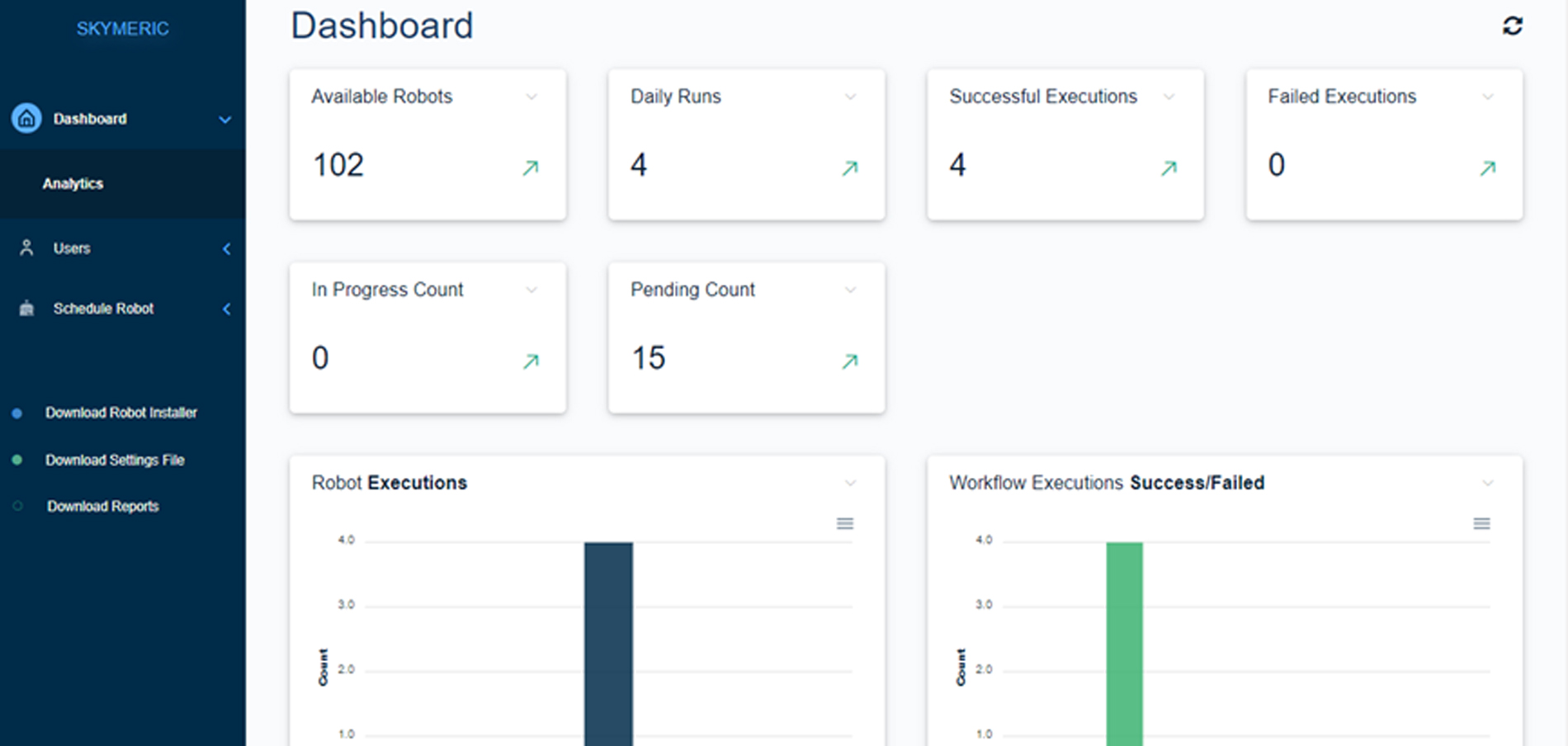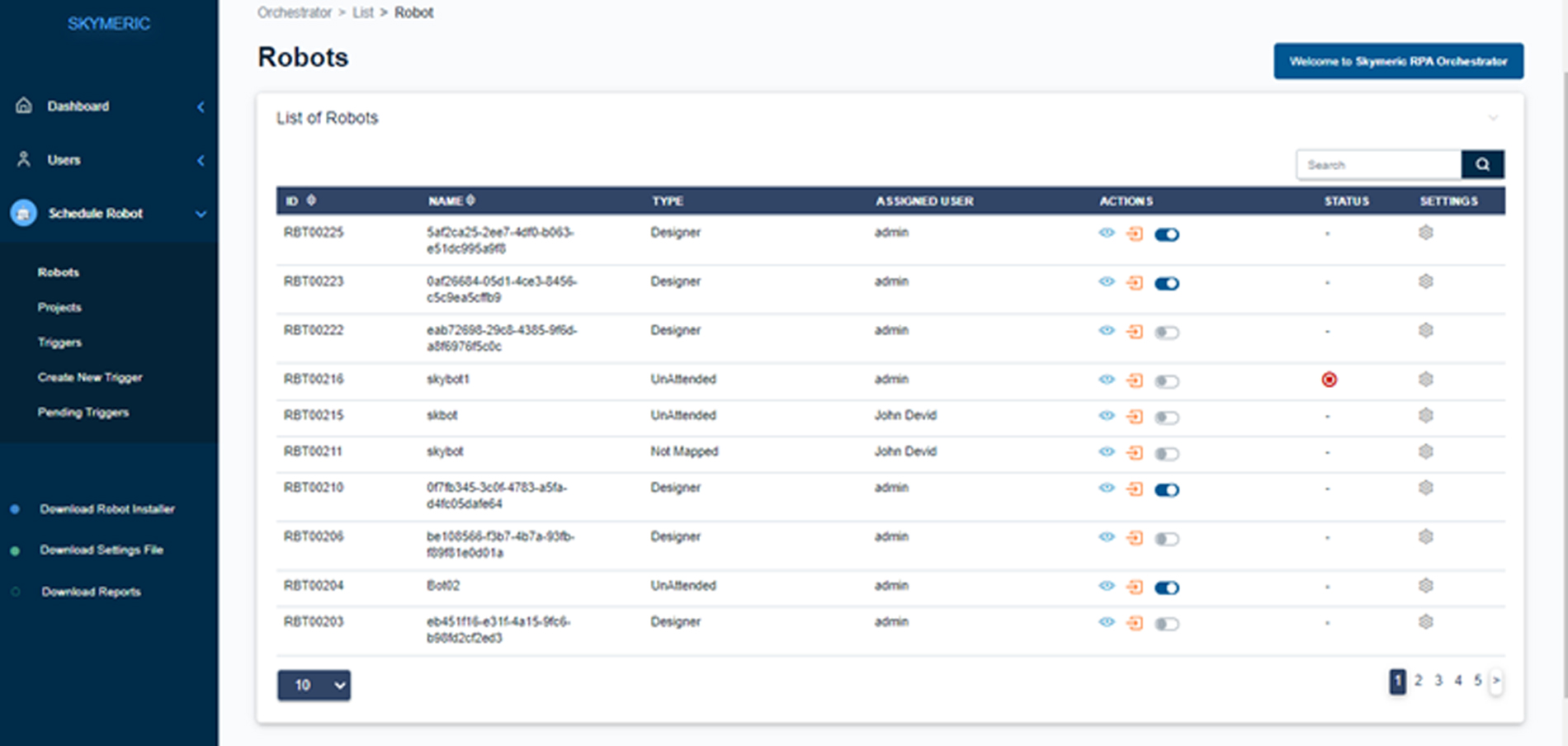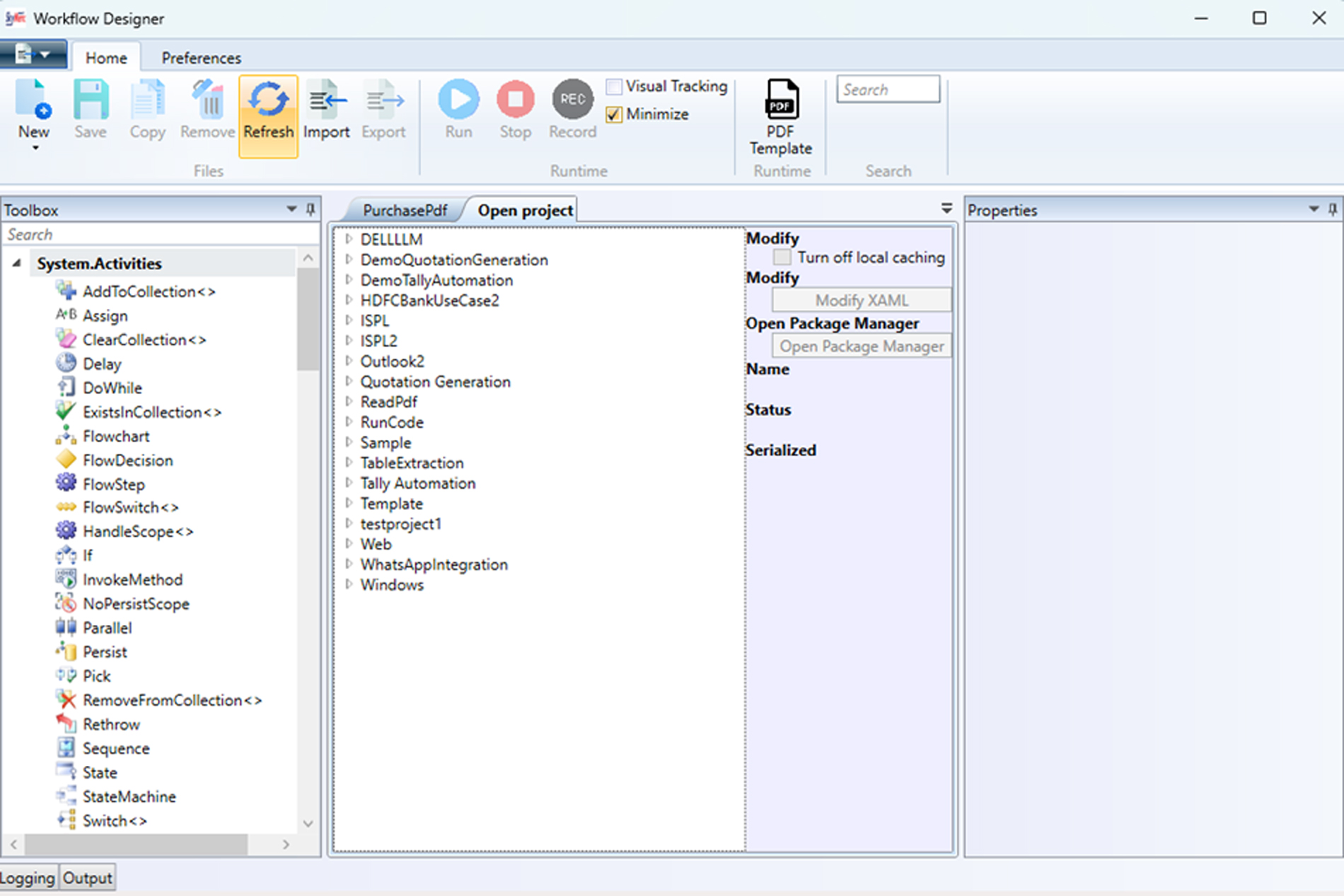RPA
The Skymeric RPA Platform consists of three key aspects that work together to provide a comprehensive automation solution.
Skymeric RPA
Orchestrator
The Orchestrator serves as the central command center for your RPA operations. It provides a user-friendly dashboard that offers comprehensive analytics and management capabilities.
Features
Dashboard Analytics: View real-time data on the number of robots successfully executed, failed robots, and the number of workflows executed by each bot.
Graphical Representation: Access visual insights through graphical representations of your RPA operations.
User Management: Add and manage users, assign user types, and control access rights.
Flexible Docker Container Architecture: Ensures seamless deployment and scalability.

Skymeric RPA
RPA Bots
RPA Bots are the executors of your automated tasks, designed to operate efficiently and effectively. There are two types of bots to cater to different operational needs.
Features
Attended and Unattended Bots: Choose between attended bots (which require human intervention) and unattended bots (which operate autonomously).
Scheduling: Bots can be scheduled to perform tasks at specific times, ensuring timely execution of workflows.
Thin Architecture: Designed for minimal resource consumption while maintaining high performance.
Context Switching: Our internationally patented design for context-switching robots significantly enhances efficiency.

Attended Bots
Attended bots are designed to work alongside human users. These bots assist users by automating parts of a process while still requiring human intervention for certain tasks. This collaboration between humans and bots is ideal for processes that need real-time decision-making.
Key Features:
- User Interaction: Attended bots operate on the user’s desktop and are triggered by specific actions taken by the user. They can assist with tasks like form filling, data entry, or navigating complex systems.
- Real-Time Assistance: These bots provide on-demand support, helping users complete tasks faster and with greater accuracy by automating repetitive or routine steps.
- Flexibility: Attended bots can adapt to dynamic environments where user input is crucial. They are ideal for front-office activities, customer service, and helpdesk operations.
Use Cases:
- Customer Support: Assisting agents with retrieving customer information, suggesting responses, and updating records in real time.
- Sales Operations: Helping sales representatives by automating data entry into CRM systems and generating quotes or reports instantly.
- Healthcare: Supporting medical staff by automating patient data retrieval and input, enabling more time for patient care.
Choosing the Right Bot for Your Needs
Attended Bots:
- Ideal for tasks that require human judgment, real-time decision-making, or frequent user interaction.
- Best suited for customer-facing roles and situations where automation can enhance human productivity.
Unattended Bots
Unattended bots operate independently without the need for human intervention. These bots are typically deployed to handle high-volume, repetitive tasks that follow predefined rules and workflows. They can work 24/7, executing tasks reliably and consistently.
Key Features:
- Autonomy: Unattended bots can run scheduled or triggered tasks without human oversight, making them perfect for back-office operations.
- Scalability: Capable of handling large volumes of transactions, unattended bots can scale operations seamlessly to meet increasing demands.
- Efficiency: These bots improve operational efficiency by reducing manual errors and completing tasks at a much faster rate than human workers.
Use Cases:
- Data Processing: Automating data extraction, transformation, and loading (ETL) processes in finance, HR, and supply chain management.
- Invoice Processing: Handling end-to-end invoice processing, from data capture to validation and posting, with minimal human intervention.
- IT Operations: Performing routine IT maintenance tasks, such as system monitoring, data backups, and software updates.
Unattended Bots:
- Perfect for high-volume, rule-based processes that do not require human intervention.
- Suitable for back-office operations where efficiency, accuracy, and scalability are paramount.
Enhanced Efficiency?
Automate routine tasks, reduce processing times, and minimize errors.
Cost Savings?
Streamline workflows to drive down operational costs.
Improved Accuracy?
Ensure consistent, error-free results across repetitive tasks.
Empowered Workforce?
Allow employees to focus on more meaningful, value-added work by offloading mundane tasks to RPA bots.

Platform
Skymeric RPA Gen AI LLM Platform

Why Combine RPA with Large Language Models (LLMs)?
By integrating advanced language understanding and generation capabilities into your automation strategy, Skymeric Technologies enables your RPA bots to comprehend, interpret, and respond intelligently to natural language. This synergy enhances customer interactions, facilitates complex data analysis, document processing, and multilingual communication seamlessly.

Partner with Skymeric Technologies
Experience the future of automation with Skymeric Technologies. Our RPA Gen AI LLM Platform, powered by cutting-edge technology, is designed to optimize your operations, improve customer satisfaction, and drive innovation.Designed to enhance productivity, improve accuracy, and drive innovation, our platform empowers your organization to thrive in today's competitive landscape to revolutionize your business operations with Skymeric Technologies.
Robotic Process Automation (RPA)
Contact Us today to schedule a consultation and discover how Skymeric Technologies can transform your business through Robotic Process Automation.
